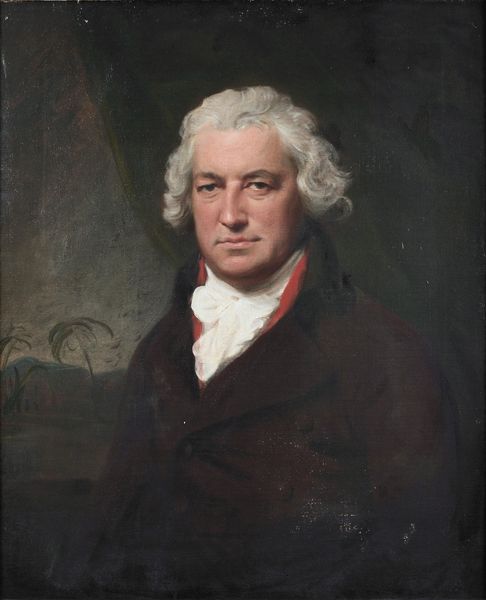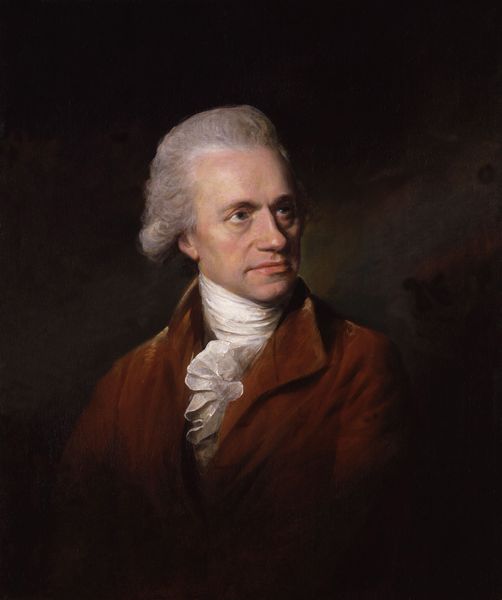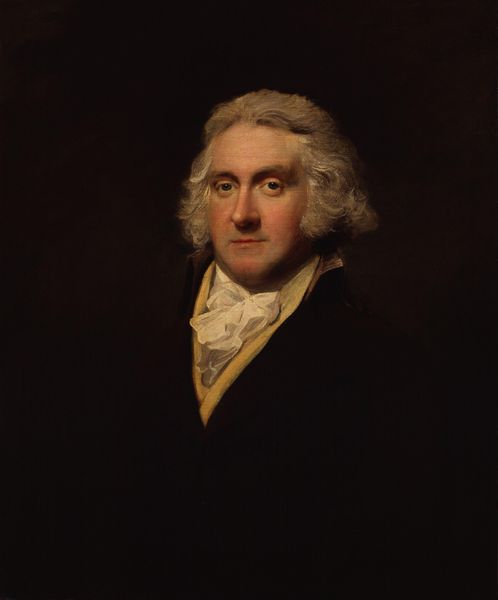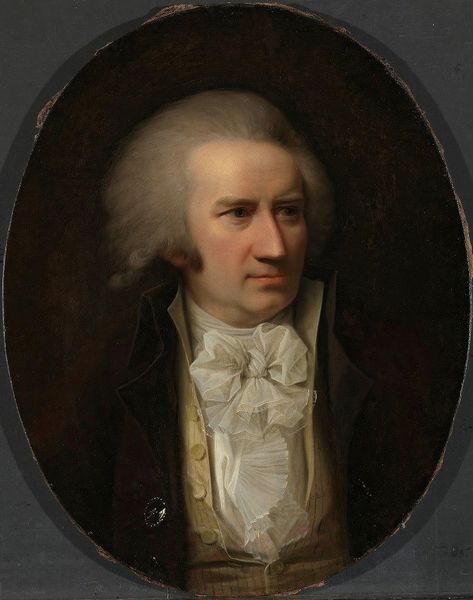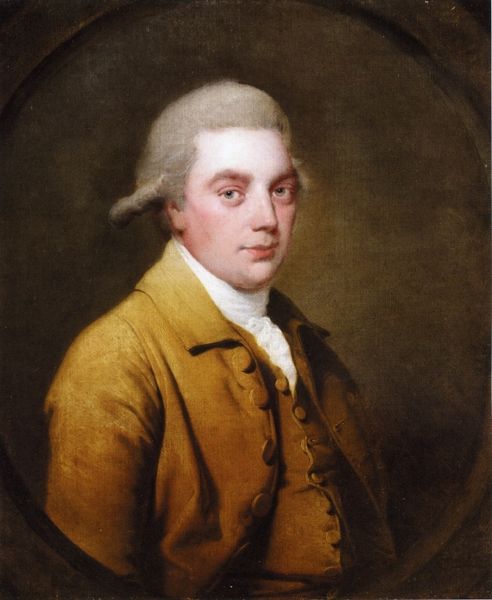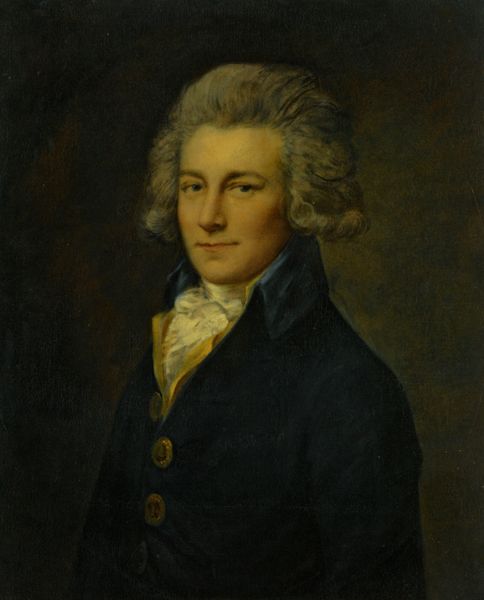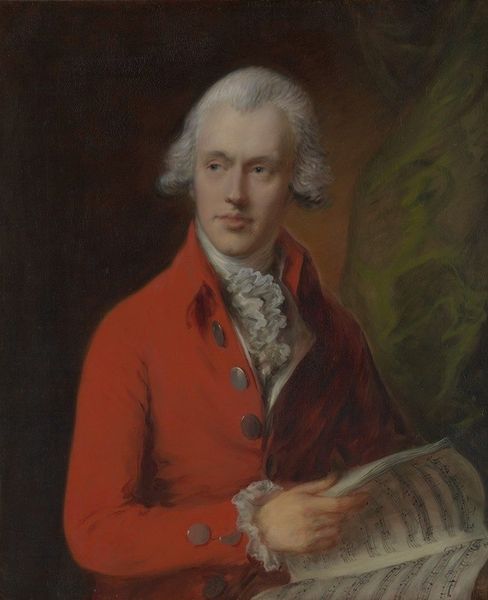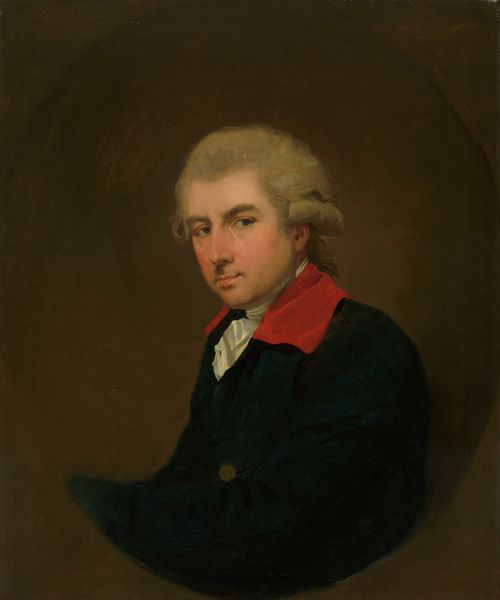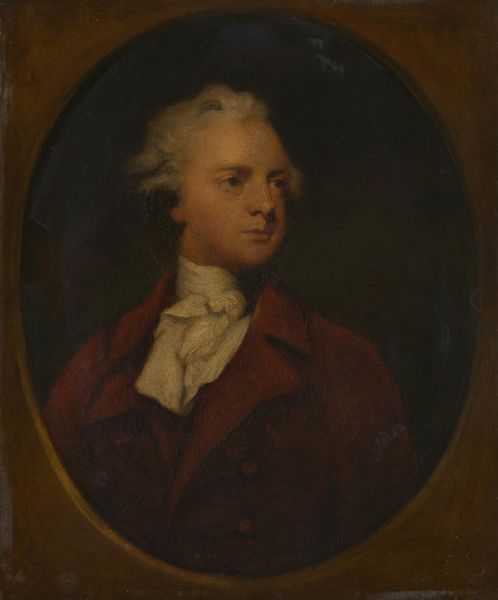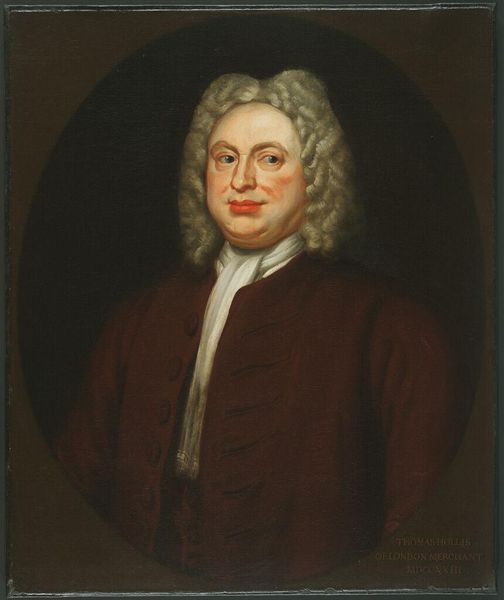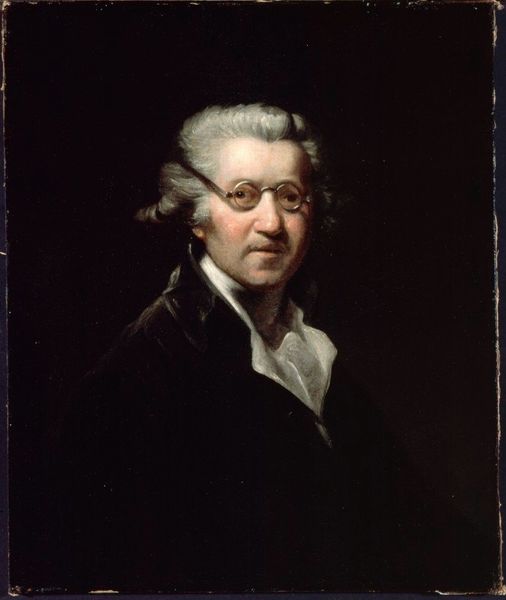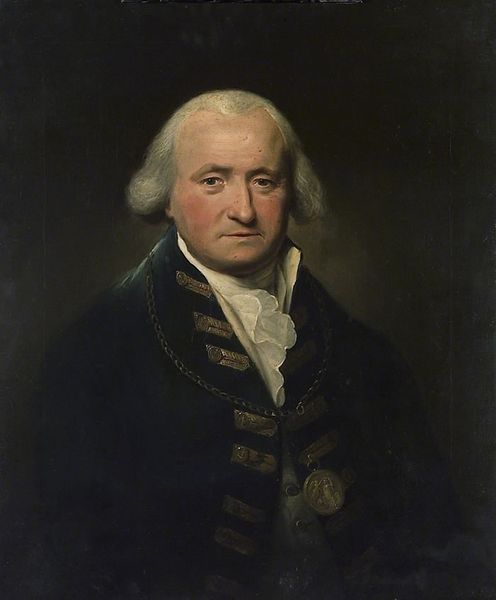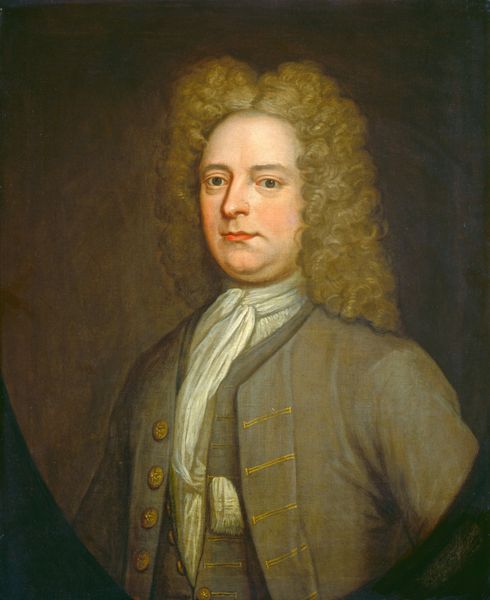
painting
#
portrait
#
painting
#
romanticism
#
history-painting
#
realism
Copyright: Public domain
Curator: Before us, we have Lemuel Francis Abbott's portrait of Valentine Green. The portrait depicts a man from the late 18th century against a somber, nearly black background. Editor: My initial reaction is one of subtle tension. The dark background almost seems to swallow him, but the details in his face and clothing are strikingly lit, giving him an air of quiet resolve. Curator: Abbott, known for his portraits of naval figures, presents Green, a prominent engraver. The portrait's existence speaks volumes about the burgeoning art world of the time and the value placed on those who reproduced and disseminated artistic images. Editor: Precisely. This isn't just a portrait; it’s a statement about the increasing visibility of artists outside the traditional painting circles. Engravers like Green were instrumental in shaping public access to art and information, making them cultural figures in their own right. The red coat feels almost rebellious against that black backdrop, subtly signalling his prominence. Curator: Absolutely, consider the institutions of the Royal Academy or other exhibition venues. The politics surrounding what kind of art was being promoted and legitimized is so crucial to consider, with Green sitting right on the outside of that circle by the nature of his practice. Editor: I agree; the framing is key. The Romanticism prevalent at that time leaned heavily towards representations of men of action. This is such an understated portrayal, drawing strength, in part, from the intimacy of it all. It suggests that those engaged with artistic labor were just as valuable and visible. The portrait challenges established hierarchies by placing an artisan in such a venerable format. Curator: So it becomes vital to understand not just *who* Green was, but the cultural landscape that would allow, even celebrate, this. We need to delve into how the commercial art world began influencing artistic recognition beyond the circles of power at that time. Editor: And how someone like Abbott uses the classic portrait format, with that dark background for emphasis, to elevate a man whose work enabled broader access to imagery and ideas. He embodies the complex social shifts towards new ideas surrounding class, identity, and who gets seen, acknowledged, and valued. It makes me question how that dynamic impacts art now, too. Curator: The politics of access always have shaped, and will shape, visual culture, and this work can still make us think critically. Editor: This has truly reminded me how a single image can open up into complex narratives about agency and access.
Comments
No comments
Be the first to comment and join the conversation on the ultimate creative platform.
